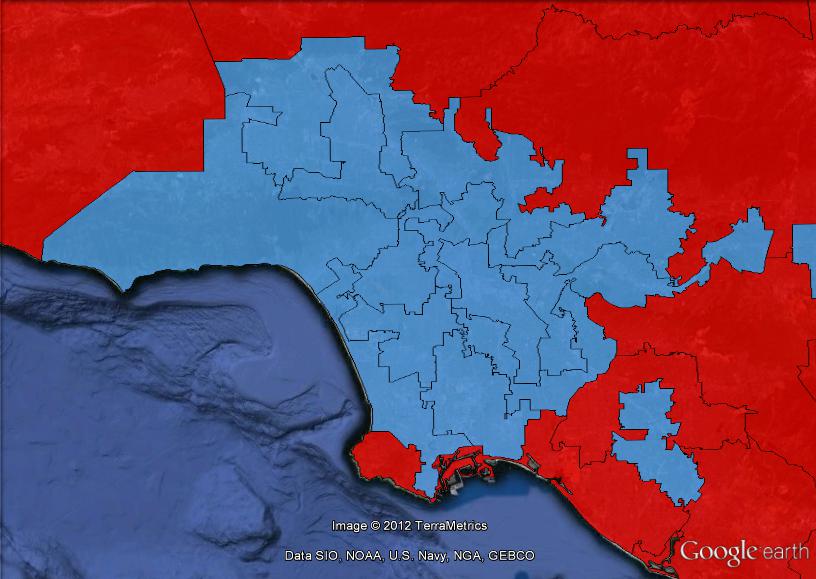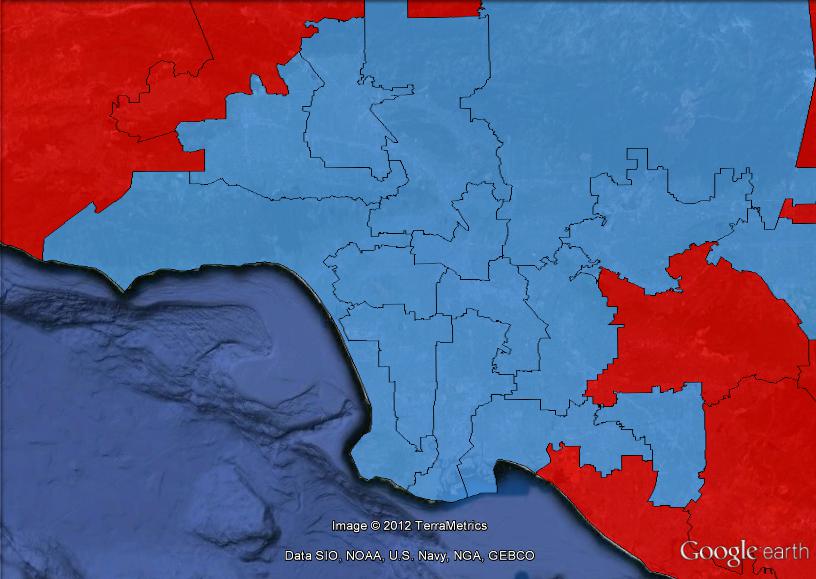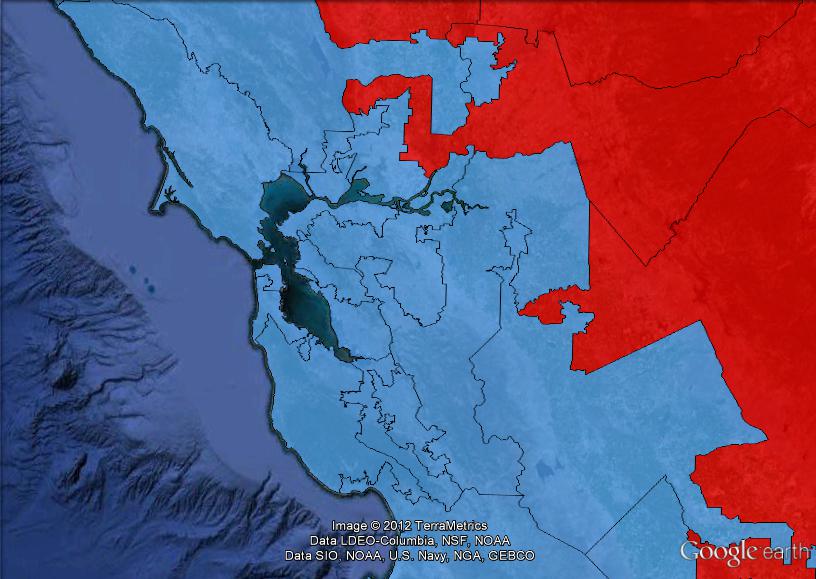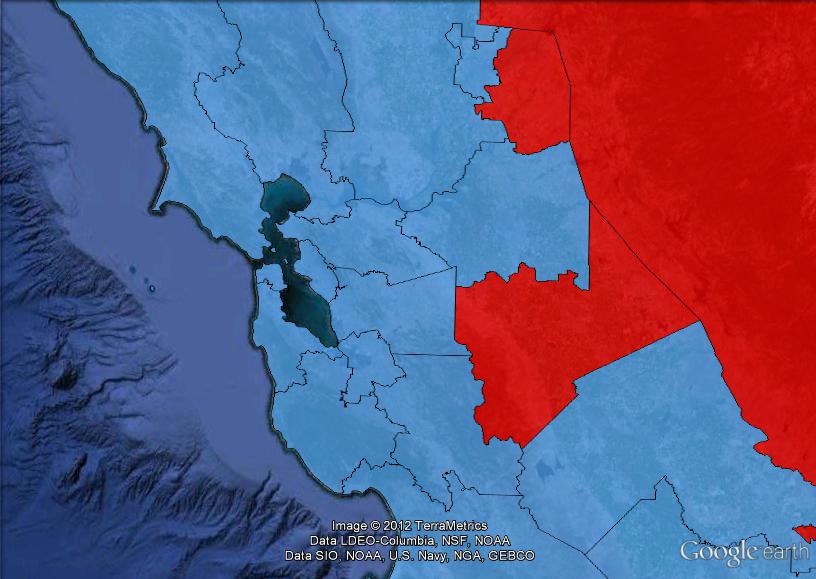I’ve blogged a few times over the last couple of years about the perverse processes used in most US states when drawing electoral boundaries for Congress and state legislatures.
In a series of referendums in 2008 and 2010, California’s voters approved the creation of an independent commission to redraw California’s boundaries after the decennial census.
New boundaries will be used for the first time next week for the House of Representatives. The previous boundaries were used from 2002 to 2010 (and you can download Google Earth maps of those boundaries from this page), and the new boundary will be used until 2020.
California’s previous boundaries were drawn to ensure that incumbents, both Democrat and Republican, were able to retain their seats, and these boundaries were very successful in preventing competitive races over the last decade.
These boundaries were severely gerrymandered – jagged boundaries interlocking with each other and covering different areas. This was a similar style to other big states such as Florida and Texas, where districts are transparently designed to produce a particular result.
The new boundaries in California are completely different – seats tend to be far more compact – covering a much smaller geographic area and reflecting local communities. Looking at the new boundaries, it’s immediately obvious what a massive affect these changes have made.
The following maps show the old and new boundaries for the Los Angeles area and the San Francisco Bay area.




The new boundaries have already had some interesting effects, with incumbents running against each other.
California has also recently instituted the ‘jungle primary’ system, where all candidates from all parties compete in a single primary, and the top two candidates, regardless of party, proceed to the general election. This has meant that there will be a number of races this week where two sitting Democratic members of Congress will be running against each other for the same seat.



That jungle primary thing is so much crap. Makes it so much harder for third parties to do okay, or even have any kind of influence/campaign. Admittedly, the chances for them were already 1 in a million, but this just makes it even harder.
I disagree that the jungle primary makes it more difficult for third-party candidates. Indeed, it makes it more likely that major party candidates will split their party’s vote, allowing a third party candidate to come up the inside. In reality, this could just end up delivering another level of primary selection.
But overall, it’s good to see at least one state moving away from the ridiculous district allocation system held by most states across the us
Comments are closed.